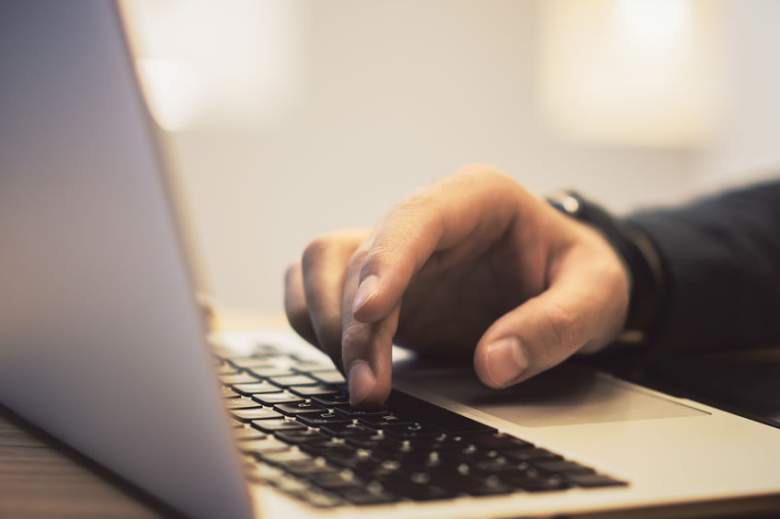
Whether you work from home or need a personal laptop for productivity and recreation, you can think of a laptop with 16GB of RAM as landing in the sweet spot. It’s ideal for multi-tasking and serious gaming, and should give you a smooth and glitch-free computing experience overall. But for most people, it’s as much memory as you should need — and overspending on RAM to get 32GB is often just wasted money unless you have a genuine need for that much memory, such as intensive video editing. Trust me: Unless you work professionally in video production or some other very computing-intensive field, you simply don’t need more than 16GB of RAM.
Thankfully, 16GB laptops are common, and many PC makers offer their laptops in multiple memory configurations. So if you see a laptop you like, you may be able to buy it equipped with 16GB. But which laptop is right for you? Keep reading; I’ve rounded up the best pre-configured 16GB laptops I could find, and at the end of the article you’ll find some additional laptop buying advice. But if processor speed is more important to you, be sure to check out the roundup of Intel Core i9-based laptops.

|
Amazon Customer Reviews
|
Price: $1,173.00 Shop at Amazon | Shop now Read our review |
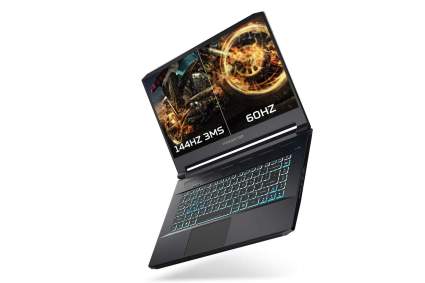
|
Amazon Customer Reviews
|
Price: $1,428.94 Shop at Amazon | Shop now Read our review |

|
Amazon Customer Reviews
|
Price: $2,799.00 Shop at Amazon | Shop now Read our review |
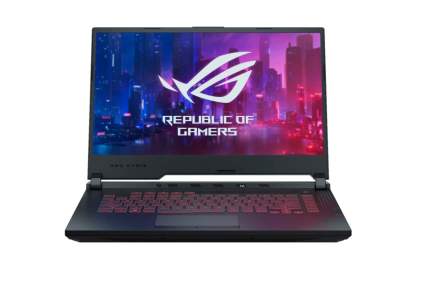
|
Amazon Customer Reviews
|
Price: $1,299.00 Shop at Amazon | Shop now Read our review |
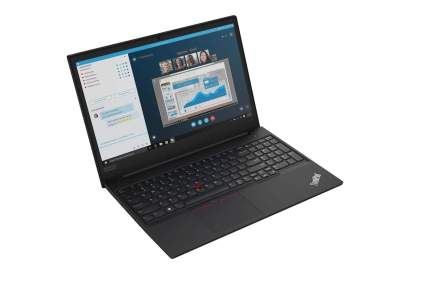
|
Amazon Customer Reviews
|
Price: $949.00 Shop at Amazon | Shop now Read our review |
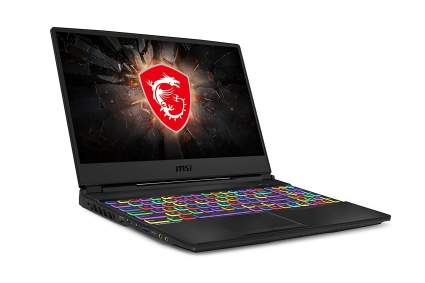
|
Amazon Customer Reviews
|
Price: $2,998.88 Shop at Amazon | Shop now Read our review |
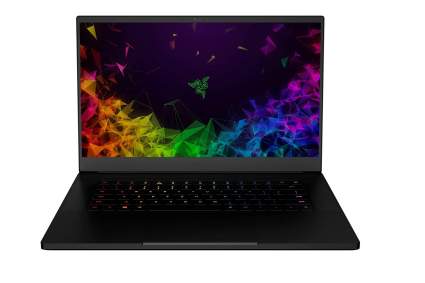
|
Amazon Customer Reviews
|
Price: $3,199.00 Shop at Amazon | Shop now Read our review |
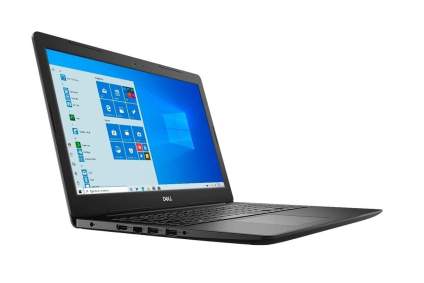
|
Amazon Customer Reviews
|
Price: $949.00 Shop at Amazon | Shop now Read our review |
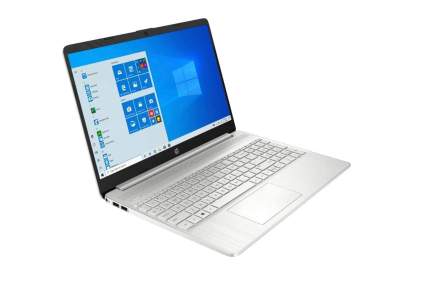
|
Amazon Customer Reviews
|
Price: $579.00 Shop at Amazon | Shop now Read our review |
-
1. Acer Predator Helios 300
Pros:- Turbo button overclocks graphics
- Four-zone RGB lighting
- Expandable memory
Cons:- Could use more ports
- Mid-range graphics
- Off-center touchpad
Processor Intel Core i7-9750H | RAM 16GB | Display 15.6 inches | GPU GeForce GTX 1660 Ti | Hard drive 512GB SSD | Dimensions 14.2 x 10 x 0.9 inches | Weight 5.3 pounds
You can count on Acer to offer affordable, mid-ranged laptops, and the Predator Helios 300 is exactly that. It’s equipped with a solid array of components that position this laptop as a workhorse for both productivity and gaming — it has an Intel Core i7 processor, 16GB of RAM, and an Nvidia GeForce GTX 1660 Ti graphics card. This is a great hardware lineup for the laptop’s 15.6-inch full HD display (1920×1080 pixels). The GTX 1660 Ti, for example, is an affordable mid-ranged video card that, while it’s bested by newer cards like the RTX 2070 and RTX 2080, can handle most games at this laptop’s resolution.
The system is positioned as a gaming laptop, so the keyboard is backlit with four zones of configurable RGB lighting, and the touchpad is off-center — that’s a matter of taste whether you like this configuration, but either way it’ll probably take a little getting used to. You get three USB 3 ports and one USB-C, along with HDMI, DisplayPort, and even an Ethernet. It would be nice to see additional USB-C ports, but it’s hard to complain with the connectivity overall — especially since the laptop has Wi-Fi 6 802.11ax, still something of a rarity in laptops today.
Here’s something else unusual: The Acer Predator Helios 300 has a one-touch overclocking mode. A “turbo” button atop the keyboard instantly overclocks the laptop’s GTX 1660Ti graphics chipset and cracks up the fans at the same time to deal with the heat. That’s a really nice touch, though it doesn’t substantially increase the performance of the laptop. And if you’re eager to increase performance — and your workflow justifies it — you can add additional memory via the empty RAM slot.
Find more Acer Predator Helios 300 information and reviews here.
-
2. Acer Predator Triton 500
Pros:- Thin and light
- All-aluminum design
- High-end RTX 2080 Max Q
Cons:- Lackluster sound
- Ports get in way of mouse
- Hard drive could be larger
Processor Intel Core i7-8750H | RAM 16GB | Display 15.6 inches | GPU Nvidia GeForce RTX 2080 Max-Q | Hard drive 512GB SSD | Dimensions 14.1 x 10 x 0.7 inches | Weight 4.6 pounds
Acer covers its bases with Predator laptops at both ends of the spectrum — modest, affordable models with mid-level graphics, and entries like this Acer Predator Triton 500, which despite measuring just .7-inches thick is sporting the formidable Nvidia GeForce RTX 2080 Max Q, a hybrid version of the high-end 2080 that makes some small compromises on clock speed and power consumption to fit in the tight constraints of a thin laptop. So while it is still classified as a 2080 and can perform real-time ray tracing and all the other goodies the RTX 2080 is known for, it won’t get so hot that it melts a hole in the bottom of your laptop and burns through to the center of the earth.
The trade-off seems worth it. While still packing high-end graphics, this laptop is super thin and light, making it very portable. It’s powered by an Intel Core i7 processor with 16GB of RAM, though it’s a little disappointing that this version of the Predator has just 512GB of SSD storage. A system this well-equipped would benefit from a full 1TB of storage (but to be fair, that option does exist for a little more money). The 15.6-inch display is backed with a 144Hz IPS panel that boasts a mere 3ms pixel response — this system is really designed for gaming. In fact, it even has Nvidia G-Sync, which prevents tearing and jitters in fast-moving gaming graphics.
Despite the lightweight design, this system is made with lots of aluminum, so it has a solid and rugged feel to it, even if the overall aesthetics are a little mundane. Even so, Acer gets a lot of stuff right. There are a wealth of ports (two USB 3 and a USB-C on the right, with another USB 3 and Ethernet on the left), and an RGB keyboard with per-key programmable lighting. Disappointments? The sound is lackluster (bring headphones) and many of the ports are on the right side where cables will interfere with your mouse.
Find more Acer Predator Triton 500 information and reviews here.
-
3. Apple MacBook Pro
Pros:- Best performing MacBook Pro
- Improved keyboard
- Crisp Retina display
Cons:- Expensive
- Short on USB-C ports
- No touchscreen
Processor Intel Core i9 | RAM 16GB | Display 16 inches | GPU AMD Radeon Pro 5500M | Hard drive 1TB SSD | Dimensions 9.7 x 14.1 x .6 inches | Weight 4.3 pounds
There’s only one Apple laptop on this list. Not because Apple doesn’t make excellent portable PCs — it certainly does — but because thanks to its new keyboard, the new 16-inch Apple MacBook Pro is the most worthy of attention. In fact, when it comes to the new MacBook Pro, it seems all anyone can talk about is the new keyboard. But in reality, this says a lot about the keyboard it’s replacing. Last year’s MacBook Pro users a butterfly keyboard that was abysmal — and people hated it. The good news is that the keyboard in this year’s laptop uses tried-and-true scissor switches and is a welcome improvement. Not surprisingly, the laptop also includes Apple’s Touch Bar, which puts common and favorite commands right at your fingertips.
The MacBook Pro is a lot more than just a keyboard, though, and it’s fair to say that this may be the best MacBook that Apple has ever released. It has an 8-core, 8th generation Intel Core i9 CPU, of course, along with 16GB of RAM and 1TB SSD for storage. It features a 16-inch display powered by an AMD Radeon pro 5000M GPU, meaning this system is beefy enough for intensive video-editing and graphics work. The resolution is a formidable 3072 x 1920 pixels, with a Retina-quality 226 pixels per inch. And even though the screen is an inch larger (on the diagonal) than last year’s 15-inch MacBook, the laptop itself is roughly the same size thanks to a much smaller bezel. It’s also perhaps the brightness laptop screen you’re likely to find at 500 nits.
It’s also worth calling out the MacBook Pro’s excellent audio. A massive six speakers generate an impressive wall of sound, but a pair of “force-canceling” woofers produce a lot of bass without creating much vibration. It also includes an array of three microphones for food quality audio without adding an external mic. And of course, you get four Thunderbolt 3 USB-C ports, Wi-Fi, and Bluetooth. And it all weighs just over 4 pounds.
-
4. Asus ROG G531GT
Pros:- Affordable pricing
- Generous dual drive storage
- Thin chassis
Cons:- Basic 60Hz IPS panel
- No USB-C
- No per-key lighting
Processor Intel Core i7-9750H | RAM 16GB | Display 15.6 inches | GPU GeForce GTX 1650 | Hard drive 512GB SSD, 1TB HDD | Dimensions 12.8 x 9.2 x 0.7 inches | Weight 5.3 pounds
The Asus ROG G531GT is a mid-range laptop that’s designed to appeal to anyone who’s looking for a good value — some key performance featured with enough compromises to keep the cost low. Case in point: You’ll find an Intel Core i7-9750H process, offset by the more modest Nvidia GeForce GTX 1650 CPU. It’s not a bad budget graphics card, but it’s far outstripped by GPUs like the GeForce 2060 and higher. Asus pairs that graphics with a 15.6-inch full HD (1920×1080) IPS panel, so it should give you no trouble for less demanding games, but keep in mind the display has no anti-tearing features.
One welcome upgrade is the storage. In addition to the 16GB of RAM, Asus includes a dual hard drive — a 512GB SSD system drive and a 1TB HDD for data. It’s a great compromise that delivers speed where you need it most — for Windows and running programs — while giving you all the storage space you need on the spinning hard drive. The port story isn’t quite so good, though. Asus includes a trio of USB 3 ports along with HDMI, Ethernet, and audio, but there’s no USB-C connection at all.
If you can overlook the lack of USB-C (which is an egregious omission, honestly), you may appreciate the RGB backlit keyboard (though no per-key lighting) and the fact that the right side of the laptop is completely clear of ports, so nothing will get tangled in your mouse zone.
-
5. Lenovo ThinkPad E595
Pros:- Inexpensive
- Rugged
- Media card reader
Cons:- Small 256GB SSD
- No USB-C
- Too many ports on the right get in the way of the mouse
Processor AMD Ryzen 5-3500U | RAM 16GB | Display 15.6 inches | GPU AMD Radeon Vega 8 | Hard drive 256GB SSD | Dimensions 14.5 x 9.9 x 0.8 inches | Weight 4.7 pounds
Lenovo has switched the architecture in the E590 series — the Lenovo ThinkPad E595 now has fully embraced AMD with a Ryzen 5-3500U CPU and the on-board Radeon Vega 8 graphics chipset. That gives solid mid-tier performance while allowing the laptop to sell at a budget-conscious price. In fact, you get a good set of features for about $750. The 15.6-inch display is a full HD (1920×1080 pixels) display, and the memory can be upgraded, if desired, to 32GB. There’s an HD webcam in the top bezel, and it’s also pretty portable, weighing in at under five pounds.
The port array, unfortunately, is a little weak. The right side of the chassis has a USB 2.0, Ethernet, and a micro SD media card reader. The left side is home to a pair of USB 3 ports, HDMI, and one USB-C — but the USB-C port is the power port for charging the laptop. That’s really disappointing on multiple fronts; Lenovo is fouling your mouse workspace with important connectors, and there’s no USB-C port for connectivity — a major oversight. On the plus side, the laptop is ready for the road with a MIL-STD-810G certification for ruggedness.
Find more Lenovo ThinkPad E595 information and reviews here.
-
6. MSI GL65 Leopard 10SFK-062
Pros:- 144Hz graphics card with RTX 2070
- Per-key RGB lighting
- USB-C and SD Card reader
Cons:- Off-center touchpad
- Connectors get in way of mouse
- No webcam
Processor Intel Core i7-10750H | RAM 16GB | Display 15.6 inches | GPU Nvidia GeForce RTX 2070 | Hard drive 512GB SSD | Dimensions 14.1 x 9.8 x 1.1 inches | Weight 5.1 pounds
You don’t need to spend a fortune on a high-performance laptop. The MSI GL65 Leopard 10SFK-062 is a great example of that maxim, clocking in right down the middle between underpowered budget systems and stratospherically priced high-end gaming rigs. This laptop comes with a beefy Intel Core i7-10750H CPU and an Nvidia GeForce RTX2070 GPU. Together, these are more than capable of playing most performance-intensive games.
The display itself is also enhanced; MSI has built this laptop around a 144Hz IPS panel, which means that if you’re using this system for gaming, you’ll have less tearing and visual artifacts. Accompanying the visuals is a larger-than-average sound system for great audio when you’re not plugged in with headphones. Leaning into the gaming vibe, the system also has per-key RGB lighting, so you can program the keyboard to light up pretty much any way you like. The touchpad is a little off-center, which is always a curious design choice — it’ll likely take some getting used to.
On the connectivity front, MSI gets almost all the way there. You get HDMI, Ethernet, DisplayPort, and both a USB 3 and USB-C connector on the left. Unfortunately, you’ll still find a pair of USB 3 ports on the right, exactly where the mouse wants to be. On the plus side, there’s also an SD card reader as well.
-
7. Razer Blade 15
Pros:- Fast 240Hz display
- Windows Hello biometric lock
- All-aluminum thin case
Cons:- All the important ports are on the right
- Hard drive just 512GB
- No 4K display
Processor Intel Core i7-8750H | RAM 16GB | Display 15.6 inches | GPU Nvidia GeForce RTX 2080 Max-Q | Hard drive 512GB SSD | Dimensions 9.3 x 14 x 0.7 inches | Weight 4.6 pounds
Razer has built this version of the Razer Blade 15 around the Max-Q version of the RTX 2080 graphics card. Close to the fastest GPU money can currently buy, it’s sized for the relatively thin frame of the Blade 15. The RTX 2080 is driving a super-fast 240Hz IPS panel that’s displaying a FHD 1920 x 1080-pixel screen, but there’s no G-Sync here (though at 240Hz, it’s not clear it’s needed). That’s accompanied by an Intel Core i7-8750H and a 512GB hard drive — probably enough storage space for most users. If you ever find 16GB of memory isn’t enough for you, this laptop is easily expandable to as much as 64GB.
The laptop itself is gorgeous, with sharp, clean lines all over the laptop. Sometimes when a laptop has a price tag over $2000, the money is all on the inside. And while you get a ton of actual performance value in this system thanks to the Intel Core i7-8750H processor and aforementioned graphics, Razer clearly made sure the laptop looks the part as well. Razer is well-known for quality builds, and this laptop feels premium from top to bottom. It has a unibody all-aluminum case and the lid has a relatively narrow bezel protecting the screen. Speaking of bezel, the laptop includes a Windows Hello-compatible webcam, so you can unlock it with biometric face recognition.
Likewise, the ports are almost all here, though they’re in weird places. You’ll find HDMI, DisplayPort, USB 3,0 and USB-C ports on the right side of the case, with more USB 3.0 ports on the left. Good luck not snagging that rat’s nest of wires on your mouse. That said, there are some other welcome features in the Razer Blade 15. Expect to get close to five hours of runtime when using the laptop for ordinary productivity tasks, and that’s even including using the keyboard’s per-key RGB lighting.
Not only is this a formidable gaming PC, it has more than enough features and horsepower to service as a platform for creative applications — designers, artists, and students can use this system for media creation and video editing, for example.
-
8. Dell Inspiron 15 15.6-inch Touchscreen
Pros:- Touchscreen
- Very affordable
- Large 1TB data drive
Cons:- No USB-C
- Minimal graphics support
- Screen resolution is low at 1366 x 768 pixels
Processor Intel Core i5-1065G7 | RAM 16GB | Display 15.6 inches | GPU Intel UHD Graphics | Hard drive 512GB SSD, 1TB HDD | Dimensions 15 x 10 x 0.8 inches | Weight 4.45 pounds
Not every laptop needs to be packed with the latest, fastest hardware for gaming and video production, so there’s no need to spend $2000 on performance you’ll never use and won’t notice is missing. That’s the idea behind the Dell Inspiron 15 15.6-inch Touchscreen, which goes easy on the specs: it has an Intel Core i5 processor and Intel’s on-board UHD graphics. But if you’re doing ordinary productivity work on this laptop, that’s plenty. Especially since the display is a 15.6-inch touchscreen. You won’t find a touchscreen in many higher-end laptops, since touchscreen tech interferes with delivering super high quality, fast-response screens for gaming. But as a productivity tool, the included touchscreen is awesome. I just wish it were somewhat higher resolution — the screen is just 1366 x 768 pixels.
Thankfully, you won’t come up short on storage with this laptop. Not only does it feature a 1TB HDD for data — which is excellent — but you also get a 512GB SSD for a system drive which means you will likely never feel the pinch of running low on space. For connectivity, you get HDMI, Ethernet, a trio of USB 3 ports, and a media card reader, so most of the bases are covered — with the exception of no USB-C port.
Find more Dell Inspiron 15 15.6-inch Touchscreen information and reviews here.
-
9. HP 15.6-inch Touchscreen Widescreen
Pros:- Great price
- Touchscreen
- Thin and light
Cons:- Very modest specifications
- Small SSD drive
- No media card reader
Processor AMD Ryzen 5 3500U | RAM 16GB | Display 15.6 inches | GPU AMD Radeon Vega 8 | Hard drive 256GB SSD | Dimensions 9.5 x 14.1 x 0.7 inches | Weight 3.8 pounds
The HP 15.6-inch Touchscreen Widescreen laptop is a slim and lightweight laptop that should appeal to budget buyers. HP has leaned into AMD architecture with this system, building it around the Ryzen 5 3500U, which is roughly equivalent to the mid-level Intel Core i5-7200U CPU. It has 16GB of RAM, of course, and a small 256GB SSD. This is definitely one area in which HP has compromised specs for price a bit too much; while the $700-ish price is right for this system, you might consider switching to one of the other configurations to get a larger hard drive, unless the vast majority of what you do is in the cloud.
The 15.6-inch display offers a modest 1366 x 768-pixel HD display, but more importantly, it’s a touchscreen, which is a godsend for productivity work. This laptop will be ultimately disappointing if your goal is to play games, but as a general home office or school workhouse, the touchscreen makes this system a winner. You’re also covered on ports. The laptop includes a pair of USB 3 connections and one USB-C, as well as an HDMI port. It would be nice to also get a media card reader, but it’s understandable that HP couldn’t quite fit one.
It’s also quite portable. Just .7-inch thick and under four pounds, it’s easy to tote anywhere. The battery also delivers a respectable nine hours of runtime, so you can get a whole day of work out of it without even bringing the AC adapter with you.
Find more HP 15.6-inch Touchscreen Widescreen information and reviews here.
What to Look for When Shopping for a Laptop
Just like when you're car shopping one of the first things you consider is the size of the engine and whether it's front-wheel drive, you should start your laptop search with the specs. What's the CPU -- if an Intel, is it a Core i3, Core i5, Core i7, or Core i9? The higher the CPU's rating, the better it will perform and the longer you may go before feeling the need to replace it -- but the more expensive it will be. But keep in mind that if you get a laptop equipped with an AMD processor, it'll probably clock in a little cheaper than an equivalent Intel laptop.
That said, the video card and screen may be the single most important part of the laptop equation, especially if you are a gamer. While the CPU is important, spend relatively more on a better graphics card, even if it means sacrificing CPU performance. Likewise, if you do play games, look for a laptop with a fast display. The default screen refresh rate is 60Hz, but faster displays can handle faster motion in games, and tech like G-Sync can make fast action appear smoother and reduce graphical "tearing" that can take you out of the game.
There are two kinds of memory to consider. Random Access Memory -- RAM -- is the temporary working space used while the computer is running. See the section "How Much RAM do I Need" below. But you also need permanent storage in the form of a hard drive. These days, don't even consider a laptop that doesn't use a solid-state drive -- an SSD. An SSD is like a giant thumb drive for your PC; there are no moving parts and it's very fast. Some laptops store just the system files on a small SSD and include a second, traditional hard drive to store your data. That's fine, but keep in mind that anything smaller than 512GB for your system drive is claustrophobically small and you might come to regret it.
Those are the essential considerations. Other things to keep in mind: Does the laptop have enough ports, and the kinds of ports you need, like USB 3 and USB-C? How big and heavy is it, especially if you want to travel with the laptop? Likewise, does the battery last long enough for your needs?
How Much RAM Do I Need?
If you're looking for a 16GB laptop, you might already have figured this out for yourself. But if you're on the fence about how much memory your laptop needs, consider these rough guidelines:
4GB is the starting point, and in all honesty, is probably insufficient for any PC. You can find budget laptops with 4GB of RAM, but they will almost always perform sluggishly because of their memory configuration.
8GB is a good compromise for laptops that won't be taxed with performance-intensive games or advanced applications. If you mainly stick to simple productivity apps and casual games, this is enough memory.
16GB is the sweet spot for more ambitious computing. If you do a lot of multitasking, running large programs like Photoshop and the Microsoft Office suite at the same time, along with keeping a lot of browser tabs open, then 16GB is a smart choice -- to say nothing of more intensive games.
32GB or more is a good choice if you do very intensive production and creation tasks, like video editing or graphic design. If you don't design 3D objects or run Adobe Premiere, though, don't get more than 16GB of memory -- it's wasted money. Spend the money that the extra memory would have cost on a larger SSD.
The Best Value in a 16GB Laptop
There's no one best laptop, regardless of what criteria you happen to be using to choose a machine. But if your primary driver is budget, there's no question that a laptop like the Lenovo ThinkPad E595 is the model to beat. Priced well under $1000 and still equipped with solid components, I would consider stepping up from the minimal 256GB hard drive -- but the USB-C port makes this the winner among the lower-priced models.
If the size of your checkbook is less of a concern but you want a high-performance machine that can handle games and routine productivity tasks, my money is on the MSI GL65 Leopard. It's a superb laptop, equipped with an Intel Core i7 and an Nvidia GeForce RTX 2070 with a fast 144Hz display. Throw in both USB-C and an SD card reader, ad there's a ton of value here for a sub-$1500 price tag.
See Also:
9 Best UPS: Uninterruptible Power Supply Buyer’s Guide
11 Best i9 Laptops
11 Best Noise Cancelling Headphones